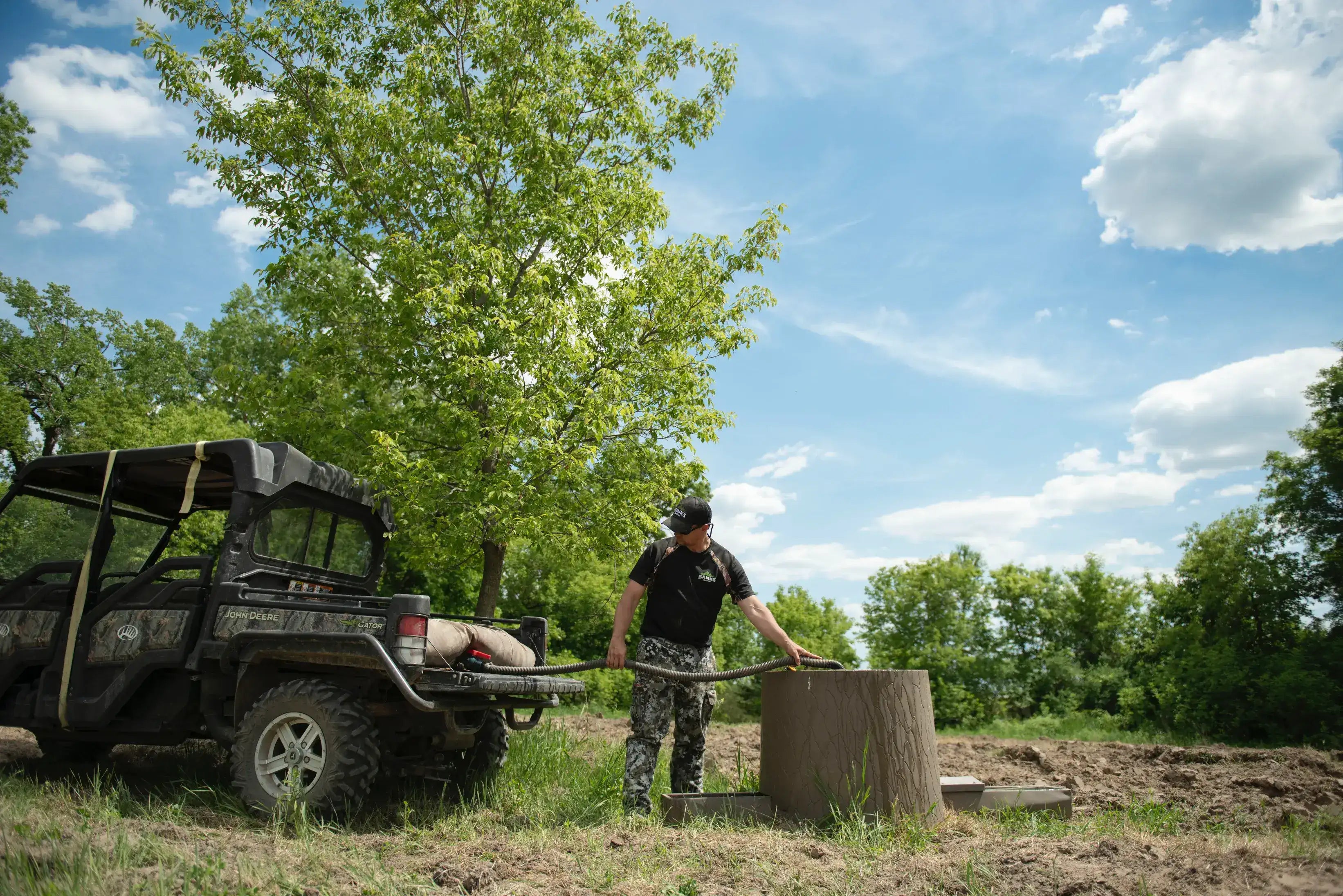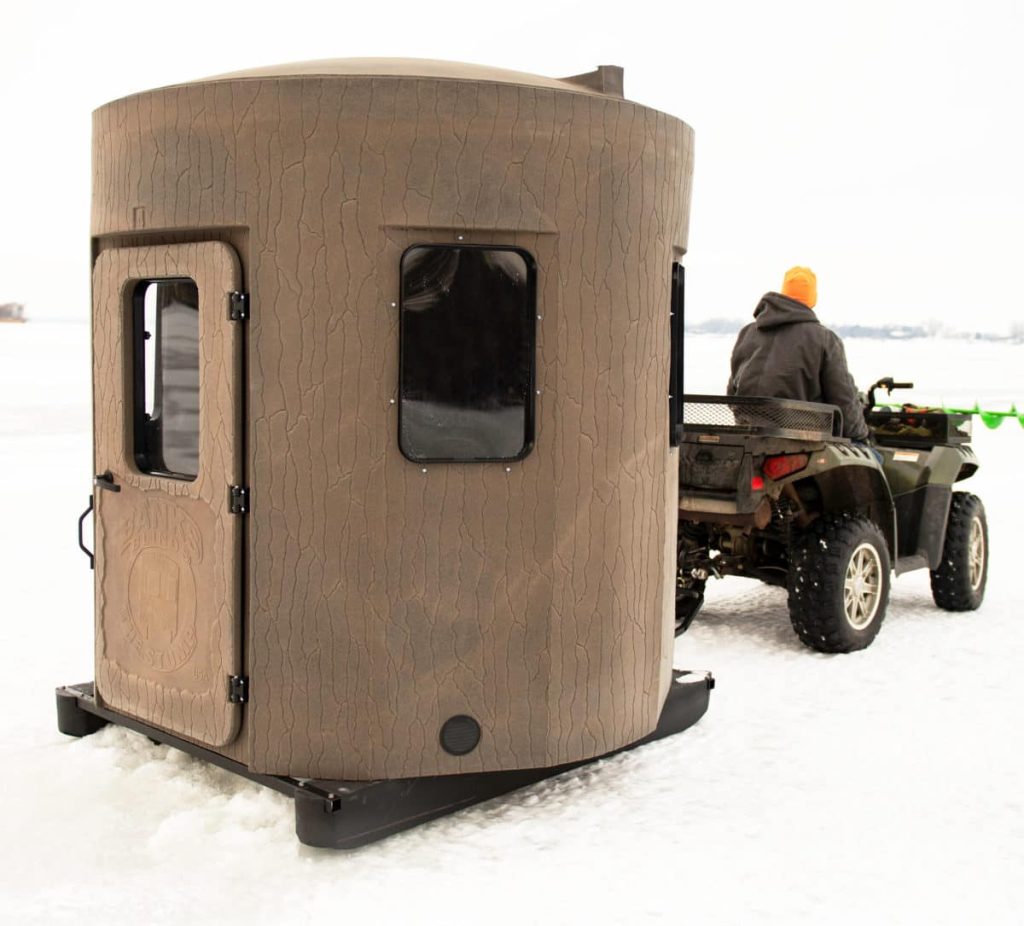Many avid hunters are probably already eagerly planning their spring turkey hunting trips. The season opens in Minnesota on April 16, which will be here before you know it. So, what characteristics make a great gobbler-hunting spot? We’ve got some tips on what to look for when you’re ready to bag a bird this summer.
Focus on Fields
Turkeys gravitate toward wheat, corn, alfalfa and clover fields due to their high fat and high protein contents. Make sure you’re focusing on fields that have already been harvested and don’t have tall crops. The turkeys will need to see anything approaching, so they’ll stick to flat fields.
Our Feedbank Gravity Feeders, like the Feedbank Timber 500, are perfect for this. The Timber feeders have ports that are low to the ground, which is ideal for drawing in turkeys. There are multiple ports circling the feeder so the entire flock can partake in the feeding. It holds up to 500 pounds of feed so you can fill it now and observe the flock’s behavior for the next couple months without having to disturb the feeder to refill it. Both deer and turkeys like corn and clover, so packing your feeder with these food sources will serve double-duty as a turkey attractant and deer attractant. Set up a trail camera and point it at your feeder to catch activity and plan your hunts accordingly by the time of day that gets the most activity.
Find the Water
Turkeys seek out water sources, just like deer. While deer like their water sources to be near their bedding areas and areas of cover, turkeys will find water sources in open areas. Place a Wild Water System, like our Wild Water 300, on your property in an open area and bring the turkeys to your land. The system holds up to 300 gallons of water and has two water troughs, each three feet long. Like the feeder ports, the troughs are low to the ground, perfect for both deer and turkeys to drink from.
Search for Dusty Areas
Turkeys like to kick up dust in recently plowed fields or anywhere else there is fresh dust. They cover their feathers in dust to disturb and evacuate any insects or pests living in their feathers and to kill any parasites. The dust also prevents their feathers from getting greasy. So, seek out areas with upturned dirt and wait for the turkeys to conduct their spa routine. Recently upturned ground will also kick up insects and bugs like spiders and worms for the turkeys to eat.
Look for Pines
Turkeys like to use tall vantage points in pine trees as their lookout spots. They prefer pines that are clear of branches in the lower part of the tree so that they can see what’s approaching below them. Find a cluster of these trees and wait for the turkeys to take up their post.
Whether you’re scoping out gobblers on foot or hunting from one of our Stump blinds, Banks Outdoors products can help you create a great turkey hunting spot. Just remember not to hunt directly on top of food or water sources, set up your command center along a path near it.
What do you think makes a great turkey hunting spot? What do you look for when you’re scouting hunting locations? Let us know in the comments below.






Turkey Hunting in Cold Weather: Challenges and Tips
Early Spring Food Plot Prep: What to Plant in March